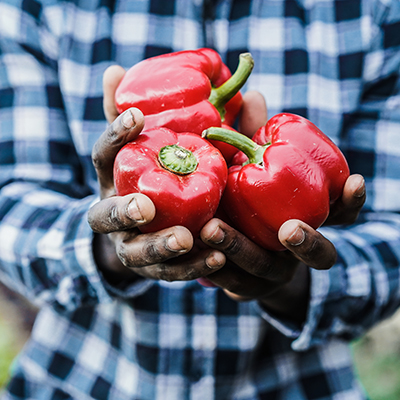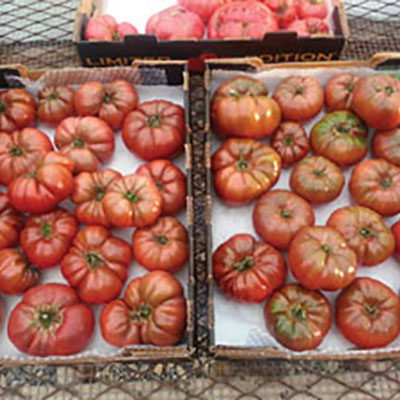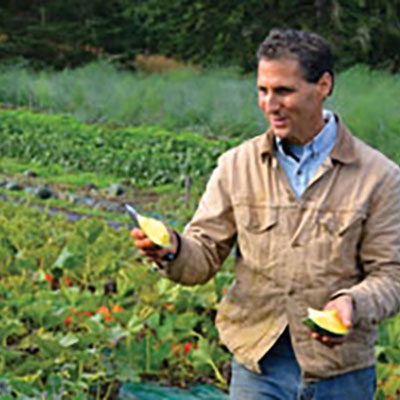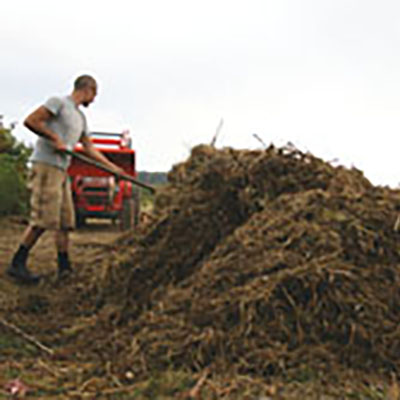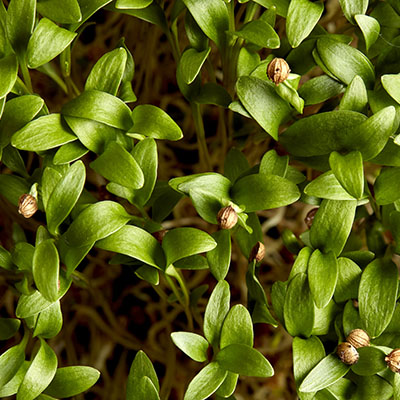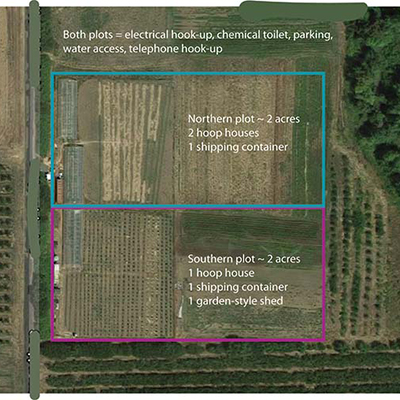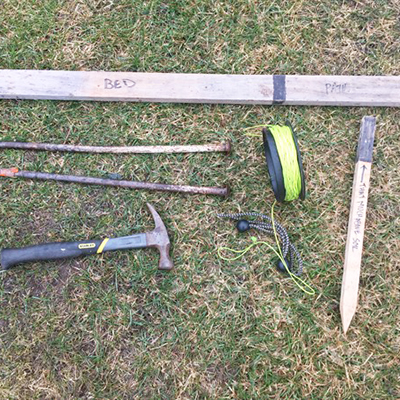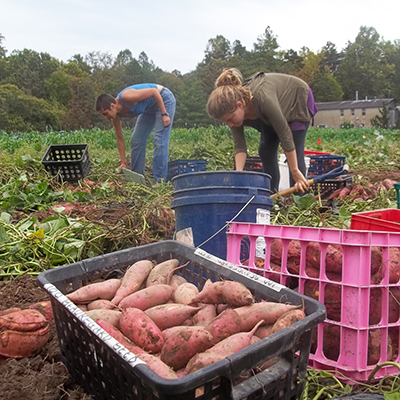I’m a suburban farmer. I started almost 10 years ago on 1/3 acre in my backyard. At first I grew a variety of vegetables - heirloom tomatoes, pea shoots, squash blossoms, basil, among others. I made out pretty well, but eventually I found it hard to compete with larger farms regarding quantity and diversity of items I could offer. After considering a range of options, I decided to go in another direction - berries.
Berries seemed to play to my advantages as a suburban farmer working alone. Berries have a defined harvest window. This allowed me to plan on a rolling harvest incorporating a number of different berries, and avoided overloading my time with just harvesting.
Many of the berries can be frozen and still command a good price. Berries generally have a rather short shelf life, which cut out significant competition from far-away growers.
Over the years I’ve learned that there are many things driving my customers - taste, health benefits and supporting local farmers are some of them. However, as I’ve become more involved with growing berries, I’ve noticed another strong motivation - memories.
I frequently get customers looking to connect with an old memory. Maybe they recall helping pick summer berries with their parents, or they long for their grandmother’s special jam. Often people miss flavors and fragrances from a time before supermarket berries were trucked in from across the country.
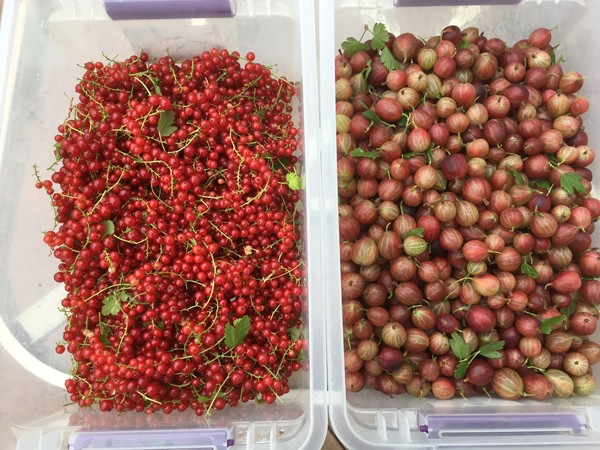
When I first started growing berries a number of years ago, I was pretty provincial in my knowledge, even though I had already been a market gardener for several years. I was familiar with the four basic berries - strawberry, blueberry, raspberry and blackberry. If you had asked me to expound on the virtues of gooseberries or haskaps, or even to identify one in a photo, I would have been totally lost. Now, after a lot of reading, asking questions and growing, I finally feel like I’m beginning to get a handle on the wide-ranging world of berries.
I’m the first to admit, I’m located in what seems to be a pretty good berry market. I live about an hour from both Philadelphia and New York City, and within that range there are also a number of affluent towns and suburbs with a culturally diverse population. Like all crops, know your potential market before you plant, and start small.
Two last points are important to stress when discussing small-scale berry growing - diversification and labor.
Insurance laws in NJ make it very expensive to hire labor legally - even part time. Therefore, I’ve structured my farm so I have a number of reasonable harvests over the season. This also helps me to stay diversified. For example, this year I lost about 40% of my gooseberries from a three-day stretch of unusually intense sun and temperature. On the other hand, my red currant harvest is much higher than last year and the same holds for elderberry and aronia.
A number of smaller harvests over the season also allows me the ability to pick berries without becoming overwhelmed. It can be a bit scary to look down a row of heavily laden bushes and realize I have to pick all that. In time of need I do ask my wife to help. Needless to say, availability of family members or friends can be an important asset.
Treat your berry crops with care during the harvest. Whenever possible don’t tear berries from the stem or bruise them. This will significantly reduce the shelf life. I try to harvest primarily in the early morning when the berries are still cool and I never let them sit outside in the sun for even short periods of time. I usually take multiple trips to the refrigerator to keep them in prime condition, and I try to deliver my berries within a day or so of picking.
Following are some of the berries I grow. None of these berries require special post-harvest handling, and all (with the possible exception of European elderberry) will tolerate some partial or dappled shade.
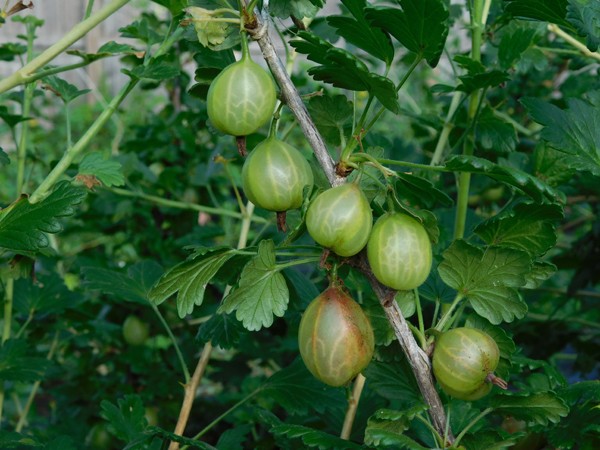
Gooseberries
I’ve never seen fresh gooseberry for sale in my area, even though we have a very diverse population and large pockets of Russians and Europeans who are all very familiar with it. Gooseberry is relatively easy to grow, has good market potential and commands a good price.
Before you start with gooseberries, or any other plant in the ribes genus (black currant, red currant, white currant, gooseberry, jostaberry) check the regulations for your state. Some states have a full or partial ban on growing these plants due to concerns with the white pine blister pathogen. Check with your local agricultural extension agent for updated information.
There are a lot of gooseberry cultivars you can grow. They vary in final size of the plant, thorniness, size, color and texture of the berry. Before you commit to a large planting, trial several cultivars to see which do best in your area. Hinnomaki Red is a widely grown variety that is very productive of medium size berries. Tixia and Invicta are examples of newer introductions that have larger and sweeter berries. Jeanne is another recent introduction by the USDA that produces medium size berries later in the season and is useful for extending the season.
Markets can include ethnic enclaves, especially Russian and European, restaurants, jam-makers, and bakeries. Gooseberries have a good shelf life in the refrigerator. They can also be frozen for later use or sale. Depending on the customer, gooseberries can be sold in pints or by weight. I usually sell the berries to restaurants by weight and to individuals or markets in pints.
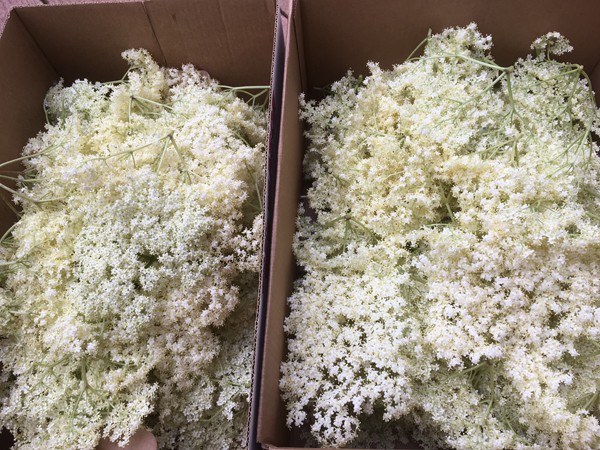
Elderberries
Though elderberries grow wild in many parts of the United States, named cultivars are generally more productive and have larger berries. The two types of elderberry grown commercially are Sambucus canadensis (American elderberry) and Sambucus nigra (European elderberry). There are several differences between European and American cultivars. First of all, the European cultivars have very fragrant flowers, which have their own market. They bear on second year growth (unlike the American types, which bear on first and second year growth), prefer sunnier locations and are less cold hardy.
Regarding American elderberry, there are many cultivars on the market. Most, if not all, are selections from wild plants. The last few years have seen an increase in the number of cultivars coming from the Midwest - a large elderberry growing area. Previously, most cultivars originated from the northeastern United States. As always, trial a number of cultivars to see which do well for you.
Markets for the flowers of European cultivars include upscale bars (think St. Germain) and restaurants, breweries and individuals. With both cultivars a market exists for elderflowers for herbal tea, and berries for jam-makers, breweries, wineries, herbalists, bakeries, restaurants and individuals. In addition to the culinary market for elderberry, there is a significant medicinal market for both the flowers and the berries. Elderberries can be made into a syrup that is used in treating colds and flu.
Elderberries have a very short shelf life and are best delivered immediately. However, unless you are getting a premium for fresh berries, there is no reason not to freeze them. I find it best to freeze the entire berry clusters. Once frozen, it is easy to strip the berries from the stems. Doing so while unfrozen would be both difficult and messy. You can then easily store the frozen berries.
Red currants
Red currants are another berry that is common in Europe but hardly available in the United States. The easy-to-grow plants produce long clusters of beautiful red berries - like red pearls on a string. Although they can be a bit time consuming to pick, they do command a good price and there is good market potential.
There are several cultivars available at nurseries. The main differences between them include time of ripening, berry size and disease resistance. Markets include restaurants (for edible decoration and prepared foods), markets and jam makers.

Jostaberry
Jostaberry is a hybrid of black currant and gooseberry produced in Germany, and has been available to growers since the late 1970s. The plants are thornless and vigorous, easily reaching 5-6 feet in height and width. The berries, which turn black when ripe, are very flavorful. In locations where black currant cannot be grown because of restrictions, jostaberry might be a viable alternative for customers looking for a similar flavor profile. Though production of berries is not as high as other ribes, it is reasonable. The ripe berries do not easily pull from the plant, which adds to the time needed for harvest.
Of the three named cultivars - Josta, Jostine and Jostaki, Josta is by far the most widely available. Josta is considered self-fertile while cross-pollination is suggested for growing Jostine and Jostaki. From my growing experience it seems that Jostaki is a better producer of berries.
The USDA has developed jostaberries known as the Orus series. The only commercially available cultivar in this series is Orus 8, though I have seen reference to a research trial using Orus 10. In my experience the Orus 8 didn’t have enough advantages to prefer it over the German jostaberries. The plants are thorny and though berry production and flavor are good, the berries are small and hard to pick. The market is similar to that for gooseberry.
Haskap/honeyberry
Haskaps and honeyberries (and also a trademarked name Yezberry) are all members of the species Lonicera caerulea. The difference is in the parentage of the plants. Honeyberry cultivars come from Russian plant stock while haskaps are mixed Russian and Japanese, and Yezberry are full Japanese parentage. The Russian parentage gives the plants increased hardiness. However, they are generally recommended up to only Zone 6 and colder. If you live in a warmer zone you run the risk of damage from late frosts as they break dormancy very early. Haskaps and Yezberries are recommended for zones 3-7 though there is some disagreement on whether zone 8 is also suitable. In any regard, consider this plant as a good possibility for colder parts of the country.
There are a lot of honeyberry/haskap/Yezberry cultivars on the market. Trial some to see which do best in your area. They all need a second variety (with a similar blooming period) for cross-pollination.
Honeyberry and haskap suffer somewhat from a lack of familiarity with customers. Because it is a newly developed berry there might be some added education and marketing needed to push sales in the beginning. Restaurants, jam-makers and small markets are all possibilities.
Purchasing plants
In most cases the berry plants mentioned above will need to be purchased from mail-order nurseries. Do your homework and make sure the nursery is reliable and reputable. Reviews can be found online. If you are considering establishing a large planting, especially for elderberry, jostaberry or currant, think about finding a nursery that sells cuttings. These plants root very easily and though you will need to wait an extra year or so for production, the up-front savings can be substantial. Gooseberry and haskap can also be started from cuttings but are a bit less reliable.
You probably won’t be able to support a family on the income from a small-acreage berry operation. But it can be great complement to a vegetable or flower farm, and will allow you to differentiate yourself in the market as a grower of something special.
Michael Brown owns and operates Pitspone Farm in New Jersey. In his free time he works full-time as a school librarian.

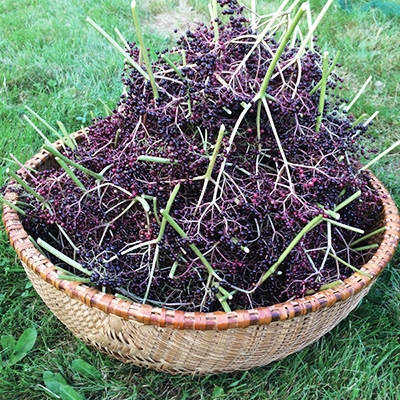

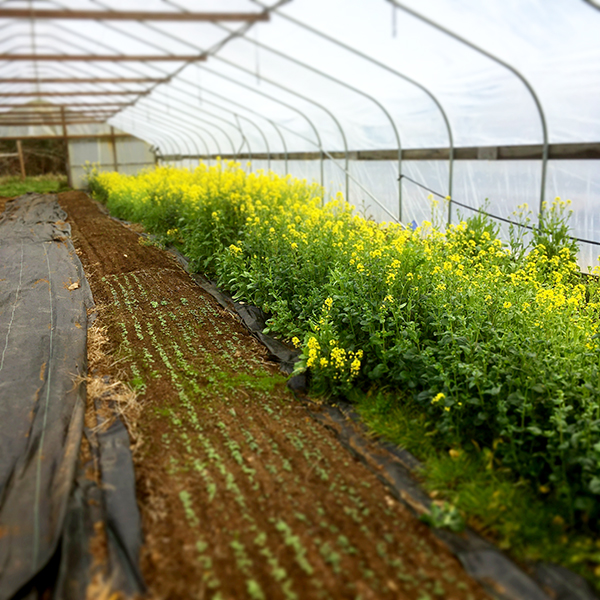 If you’ve been a subscriber to Growing For Market (or even if you haven’t), you’re probably familiar with the many advantages of no-till agriculture. No-till methods can reduce a farm’s carbon footprint, promote complex soil biology, and preserve and build organic matter.
If you’ve been a subscriber to Growing For Market (or even if you haven’t), you’re probably familiar with the many advantages of no-till agriculture. No-till methods can reduce a farm’s carbon footprint, promote complex soil biology, and preserve and build organic matter.
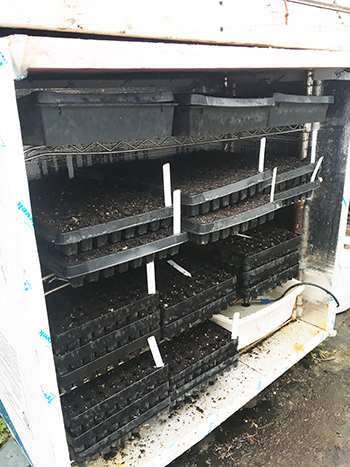 Until two years ago I was germinating all seedlings in greenhouses using almost exclusively bottom heat from electric heat mats. At my current farm we only had space for about 8-10 trays on our two mats and we definitely noticed differences in the germination (and presumably the heat the mats were providing) on the edges of our trays.
Until two years ago I was germinating all seedlings in greenhouses using almost exclusively bottom heat from electric heat mats. At my current farm we only had space for about 8-10 trays on our two mats and we definitely noticed differences in the germination (and presumably the heat the mats were providing) on the edges of our trays.
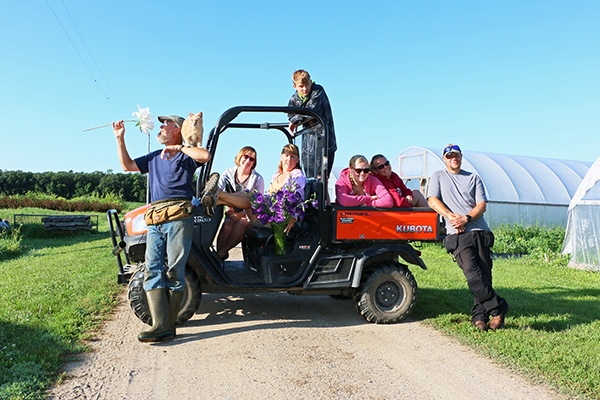 Here's a system to track all those details
Here's a system to track all those details
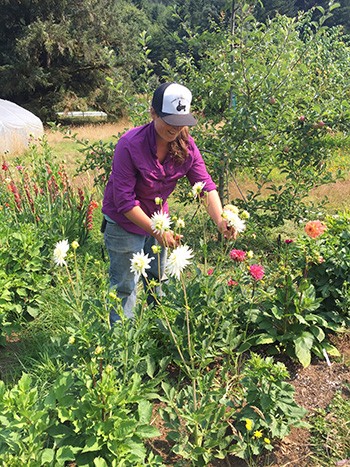
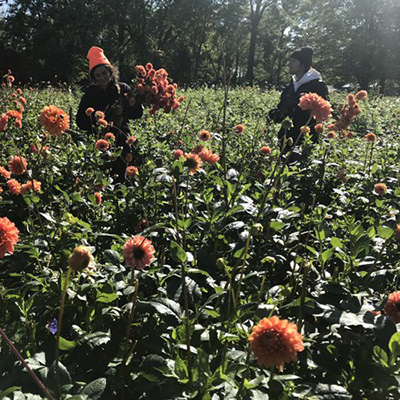
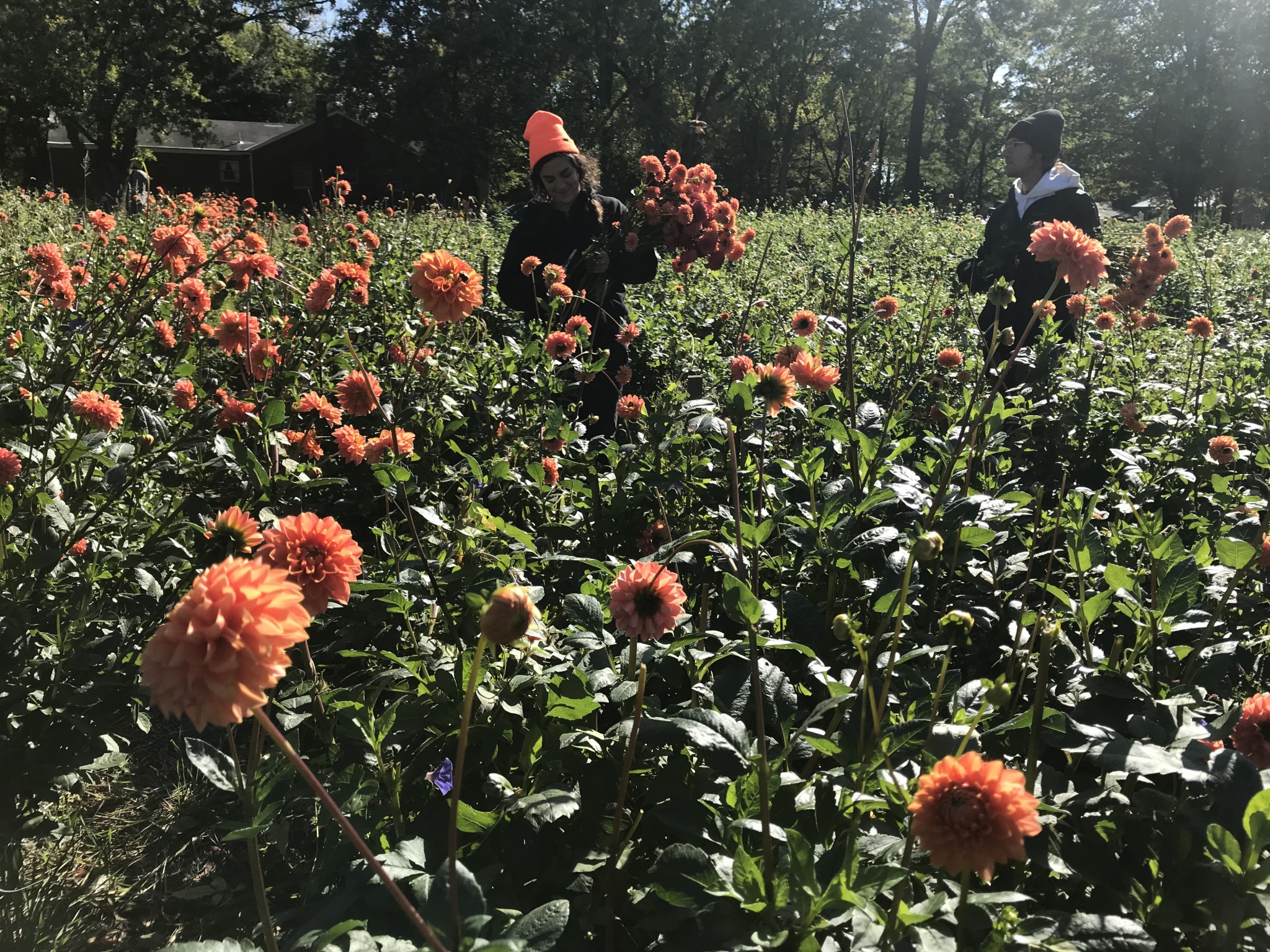 Dahlias were our number one crop this year, even beating out lisianthus and ranunculus by a landslide. We have tried many different methods of growing them, and these are the solutions we’ve come up with. I’m sure there are still better ways, and if you know of any, definitely send them our way! This year we planted 7,000 dahlias and plan to plant even more next year as we increase our growing space. Let’s just start at the beginning with planting and work our way through the whole process.
Dahlias were our number one crop this year, even beating out lisianthus and ranunculus by a landslide. We have tried many different methods of growing them, and these are the solutions we’ve come up with. I’m sure there are still better ways, and if you know of any, definitely send them our way! This year we planted 7,000 dahlias and plan to plant even more next year as we increase our growing space. Let’s just start at the beginning with planting and work our way through the whole process.